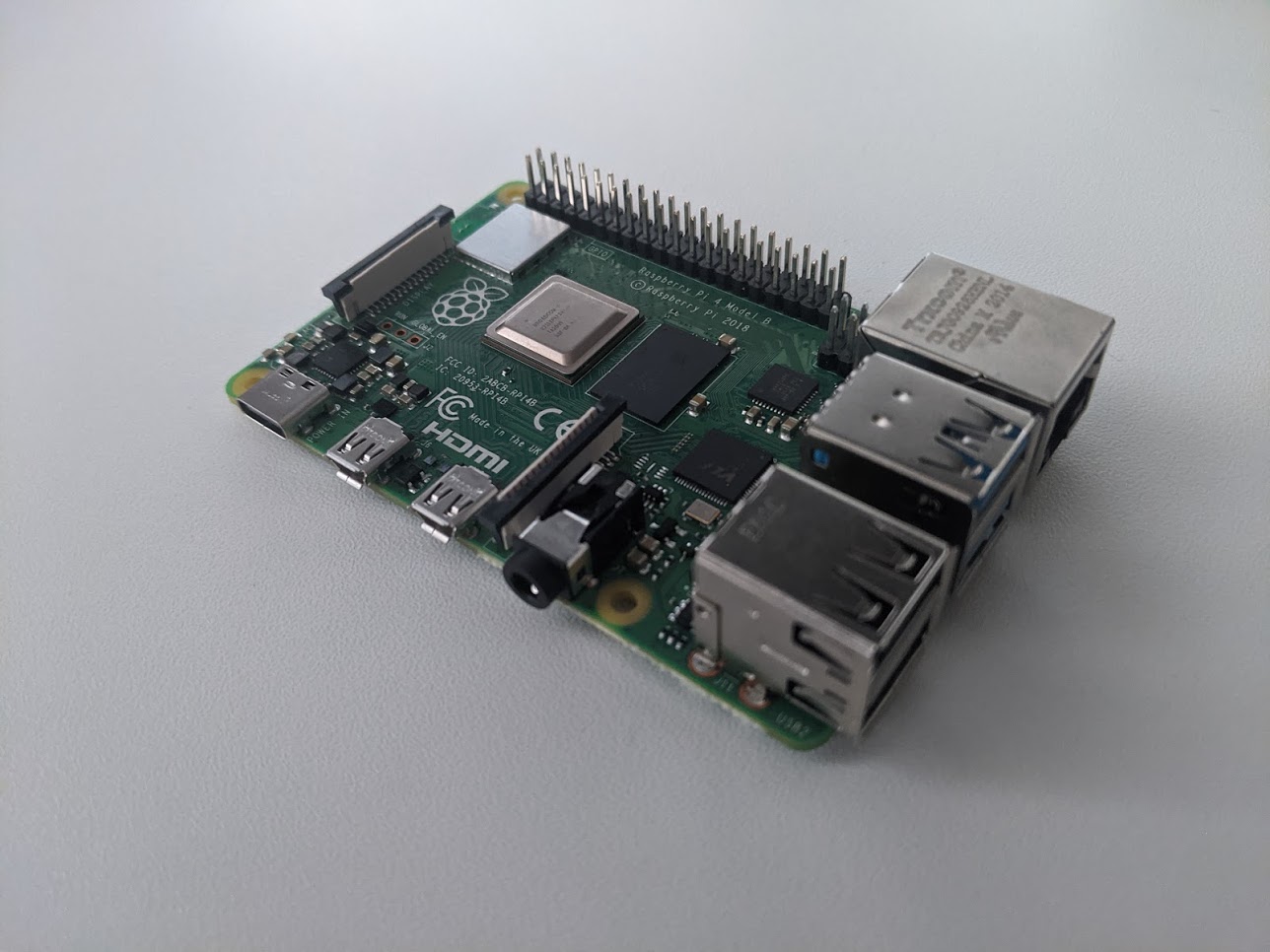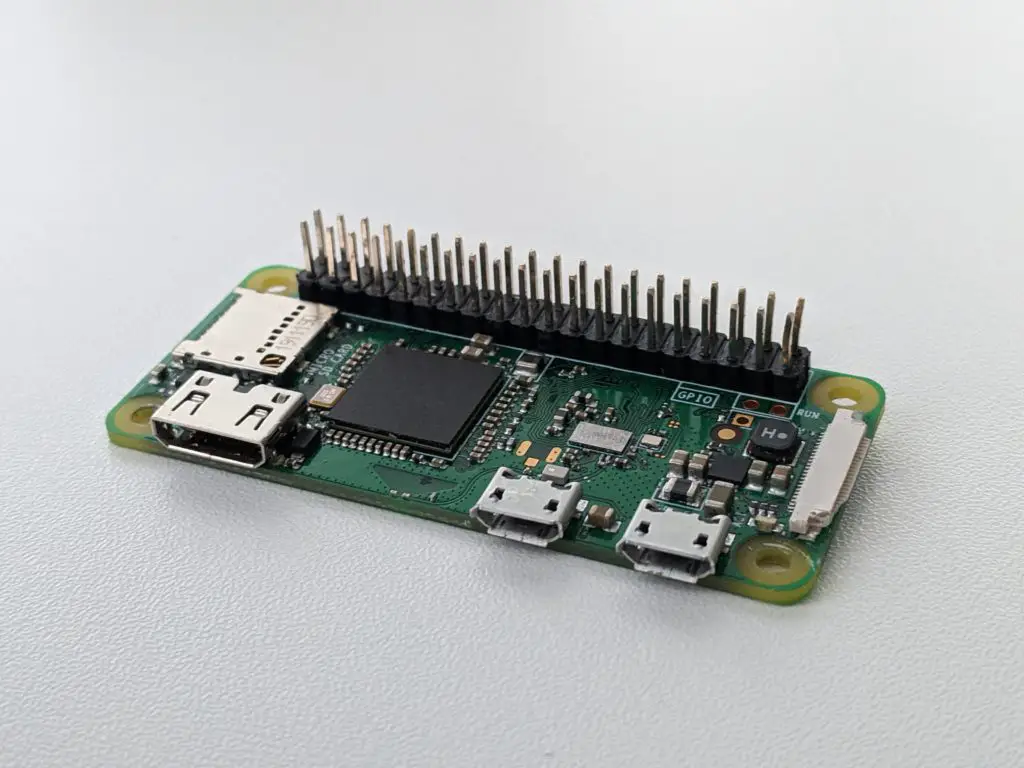As an Amazon Associate I earn from qualifying purchases.
The Raspberry Pi is an affordable small computer that is great for just about everyone looking to explore the world of computing and electronic circuits. Don’t be fooled by the raw form of the Raspberry Pi. It is extremely easy to install.
What is a Raspberry Pi?


A Raspberry Pi is a low cost barebones computer board with inputs such as USB, Ethernet, HDMI and a GPIO (General Purpose Input/Output) which gives you the ability to connect electronic circuits and electronic components . You can connect components such as LED’s, displays and sensors using GPIO. Most models include WIFI and Bluetooth capabilities which makes it easy and painless to connect the internet or maybe even a Bluetooth speaker!
Who is the Raspberry Pi for?
Everyone! Whether it is using it as a regular desktop, email server, entertainment system. etc. The possibilities are endless for this little device. The Raspberry Pi is a great device for anyone interested in programming and/or electronics. It’s also kid friendly too!
Which version of the Raspberry Pi should I get?
Raspberry Pi 4
The latest Raspberry Pi to hit the market is the Raspberry Pi 4. This comes in various different RAM configurations (2GB, 4GB & 8GB). For most needs, either 2GB or 4GB will be sufficient. If you are running anything that requires higher performance then I would recommend getting the 8GB version.
| Pi 4 (2GB) | Pi 4 (4GB) | Pi 4 (8GB) |
| Raspberry 4 2GB @ Amazon | Raspberry Pi 4 4GB @ Amazon | Raspberry Pi 4 8GB @ Amazon |
| Broadcom BCM2711, Quad core Cortex-A72 @ 1.5GHz 2GB LPDDR4-3200 SDRAM IEEE 802.11ac wireless, Bluetooth 5.0, BLE Gigabit Ethernet 2 USB 3.0 ports; 2 USB 2.0 ports. 40 Pin GPIO header 2 × micro-HDMI ports (up to 4kp60 supported) 2-lane MIPI DSI display port 2-lane MIPI CSI camera port Micro-SD card slot 5V DC via USB-C connector (minimum 3A*) | Broadcom BCM2711, Quad core Cortex-A72 @ 1.5GHz 2GB LPDDR4-3200 SDRAM IEEE 802.11ac wireless, Bluetooth 5.0, BLE Gigabit Ethernet 2 USB 3.0 ports; 2 USB 2.0 ports. 40 Pin GPIO header 2 × micro-HDMI ports (up to 4kp60 supported) 2-lane MIPI DSI display port 2-lane MIPI CSI camera port Micro-SD card slot 5V DC via USB-C connector (minimum 3A*) | Broadcom BCM2711, Quad core Cortex-A72 @ 1.5GHz 2GB LPDDR4-3200 SDRAM IEEE 802.11ac wireless, Bluetooth 5.0, BLE Gigabit Ethernet 2 USB 3.0 ports; 2 USB 2.0 ports. 40 Pin GPIO header 2 × micro-HDMI ports (up to 4kp60 supported) 2-lane MIPI DSI display port 2-lane MIPI CSI camera port Micro-SD card slot 5V DC via USB-C connector (minimum 3A*) |
Raspberry Pi Zero W
The Raspberry Pi Zero is a much smaller device at 2.6 x 1.2 x 0.2 inches (66 x 30.5 x 5mm) and less powerful but it still has many great applications – not to mention it’s much cheaper than the Raspberry Pi 4! It has a 1 GHz single Core CPU & 512MB of RAM. Perfect for small electronic applications such as powering electric motors, LED’s etc. There are currently 2 versions of the Raspberry Pi Zero although I would solely recommend picking up the Raspberry Pi Zero W as it includes built in WIFI and Bluetooth support.


| Raspberry Pi Zero | Raspberry Pi Zero W @ Amazon |
| Raspberry Pi Zero W Motherboard Only SoC: Broadcom BCM2835–CPU: ARM11 running at 1GHz RAM: 512MB Dimensions: 65mm × 30mm × 5mm | Raspberry Pi Zero W Motherboard Only SoC: Broadcom BCM2835-CPU: ARM11 running at 1GHz RAM: 512MB Wireless: 2.4GHz 802.11n wireless LAN (WiFi) Bluetooth: Bluetooth Classic 4.1 and Bluetooth LE Dimensions: 65mm × 30mm × 5mm |
What do I need for the Raspberry Pi?
In it’s original form, the Raspberry Pi comes with just the board. You will need to purchase other items such as an SD or Micro SD card (depending on the model), a case if you want to keep your Pi protected and of course, a power supply. You might want to expand this with purchasing an electronic sensor kit to get the most out of your Pi.
Micro SD card
For every single Raspberry Pi that I’ve bought, I have used the SanDisk Ultra 16GB @ Amazon (or in some cases 32GB) Micro SD card. I have never had any performances issues with this card and it comes at a great price.
Power Supply
Depending on Raspberry Pi model you choose to get, there will be different power supplies. All models up to the Raspberry Pi 3 (including the Raspberry Pi Zero W) use a microUSB connection. The newer Raspberry Pi 4 model uses a USB-C power supply.
Bundles
If you don’t want to buy everything separately then I recommend looking into bundles. Bundles are a great way of getting everything you need to get up and running. My favourite bundles are from CanaKit.
| CanaKit Raspberry Pi 4 Starter Kit (2GB RAM) @ Amazon | CanaKit Raspberry Pi 4 Starter Kit (4GB RAM) @ Amazon | CanaKit Raspberry Pi 4 Starter Kit (8GB RAM) @ Amazon |
| Raspberry Pi 4 2GB 32GB Mico SD Card Raspberry Pi 4 Case w/ fan system USB-C Power supply CanaKit USB-C PiSwitch | Raspberry Pi 4 4GB 32GB Mico SD Card Raspberry Pi 4 Case w/ fan system USB-C Power supply CanaKit USB-C PiSwitch | Raspberry Pi 4 8GB 32GB Mico SD Card Raspberry Pi 4 Case w/ fan system USB-C Power supply CanaKit USB-C PiSwitch |
What can the Raspberry Pi be used for?
The Raspberry Pi is an extremely versatile device. It can be used for just about anything you can think of. Here are some examples:
- Pi Robot
- Learning to code
- Garage Opener
- Security Camera
- NAS Box
- Game Emulator
- Weather station
- PI web server
- Minecraft server
- Wearable tech
- Multi functional bicycle computer (tutorial coming soon)
Check out some of my Raspberry Pi projects here

